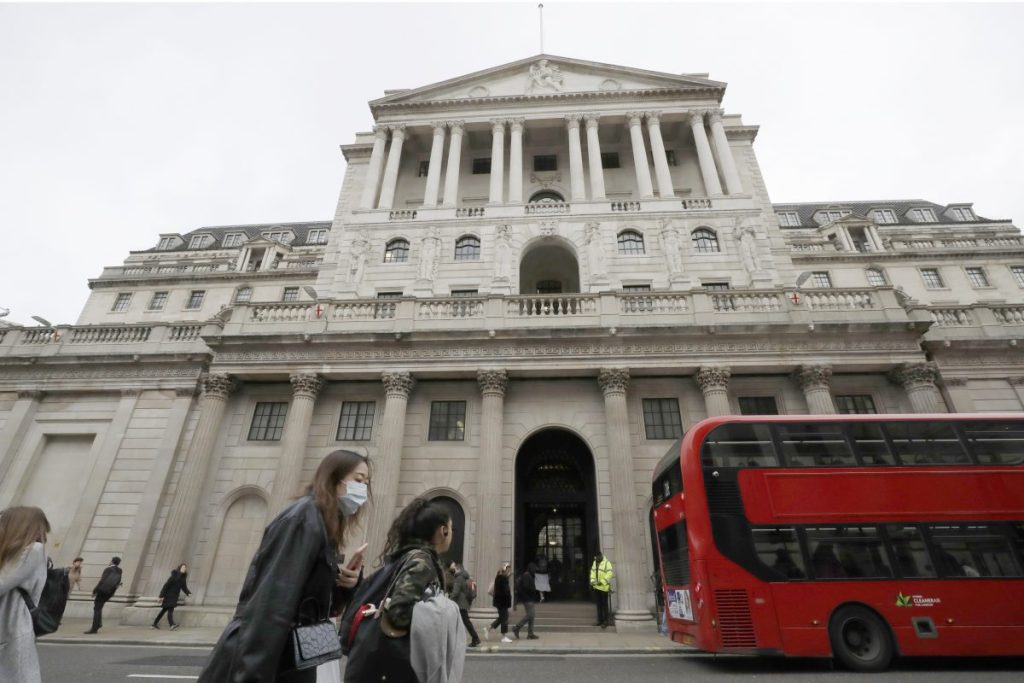 Bank of England in London. AP Photo/Matt Dunham
Bank of England in London. AP Photo/Matt Dunham
The Bank of England’s London headquarters and museum will no longer house a group of artworks depicting several of its former leaders. The bank decided to remove the works following a review that connected these leaders to the trans-Atlantic slave trade.
The removals accounted for ten works, including eight oil paintings and two statue busts representing figures who held positions as governors or directors at the bank from 1698 and 1814. Among the artworks was a painting of the bank’s founding director, Gilbert Heathcote. Reuters first reported news of the removals in late August.
The move follows increasing calls for museums in the U.K. and throughout Europe to acknowledge institutional links to colonialism and slavery. Public pressure on museums to reckon with their colonial pasts intensified last year amid global Black Lives Matter protests that began following the police killing of George Floyd.
Last year, the British Museum in London made updates to an exhibition to shed light on some objects’ connections to colonialism and slavery. The museum’s decision to move a bust of Hans Sloane, a slave owner and a physician, from a plinth to a display case in the exhibition drew protest from Save Our Statues, a campaign group that advocates for the preservation of the British monuments. Meanwhile, Oxford University scholars denounced the school’s decision to keep a statue of the British imperialist Cecil Rhodes after calls for its removal this year.
The Bank of England, which oversees a museum that has a collection of 40,000 items, commissioned an outside researcher to review the Bank’s “historic links with the trans-Atlantic slave trade in detail.” The review involved an investigation into the figures’ links to the West Indian merchants and other commercial entities associated with the slave trade. The bank said the information gleaned from the review would be used for future exhibitions related to the institution’s history.
The figures depicted in the recently removed artworks were referenced in a database created by the University College London that tracks British institutional links to slavery. According to the database, 25 Bank of England officials who served in positions between the 18th and 19th centuries were owners of enslaved people or tied in some way to the slave trade.
The moves follows the Bank of England’s acknowledgement that it had not created “an ethnically diverse and inclusive workplace” last month. A review commissioned last fall found that nonwhite employees faced salary disparities and fewer opportunities for promotions. In July, the Bank’s governor, Andrew Bailey, said that the institution would pursue reforms to create a more diverse workforce.
Source link : https://www.artnews.com/art-news/news/bank-of-england-removes-artworks-slave-trade-1234603054












